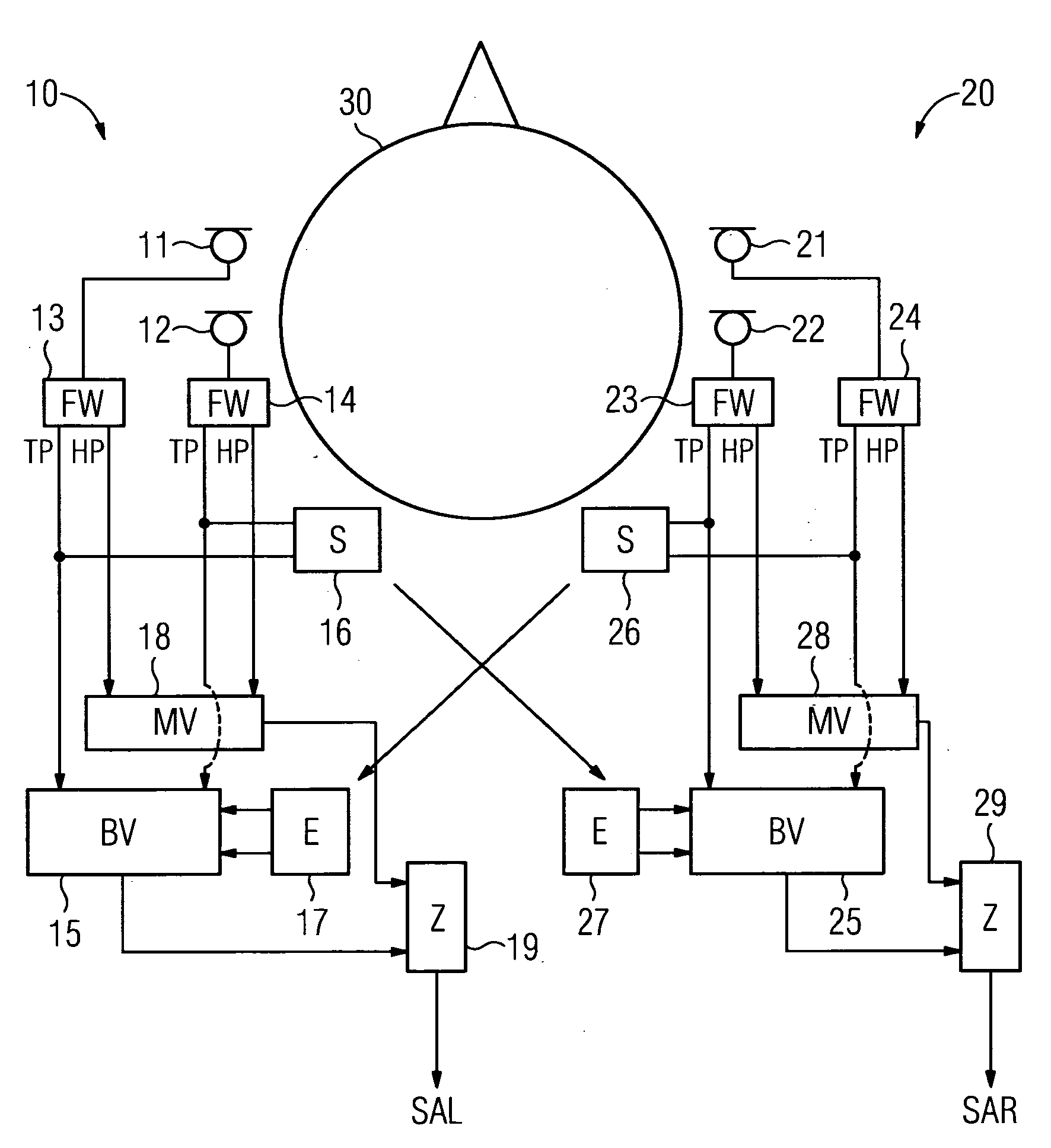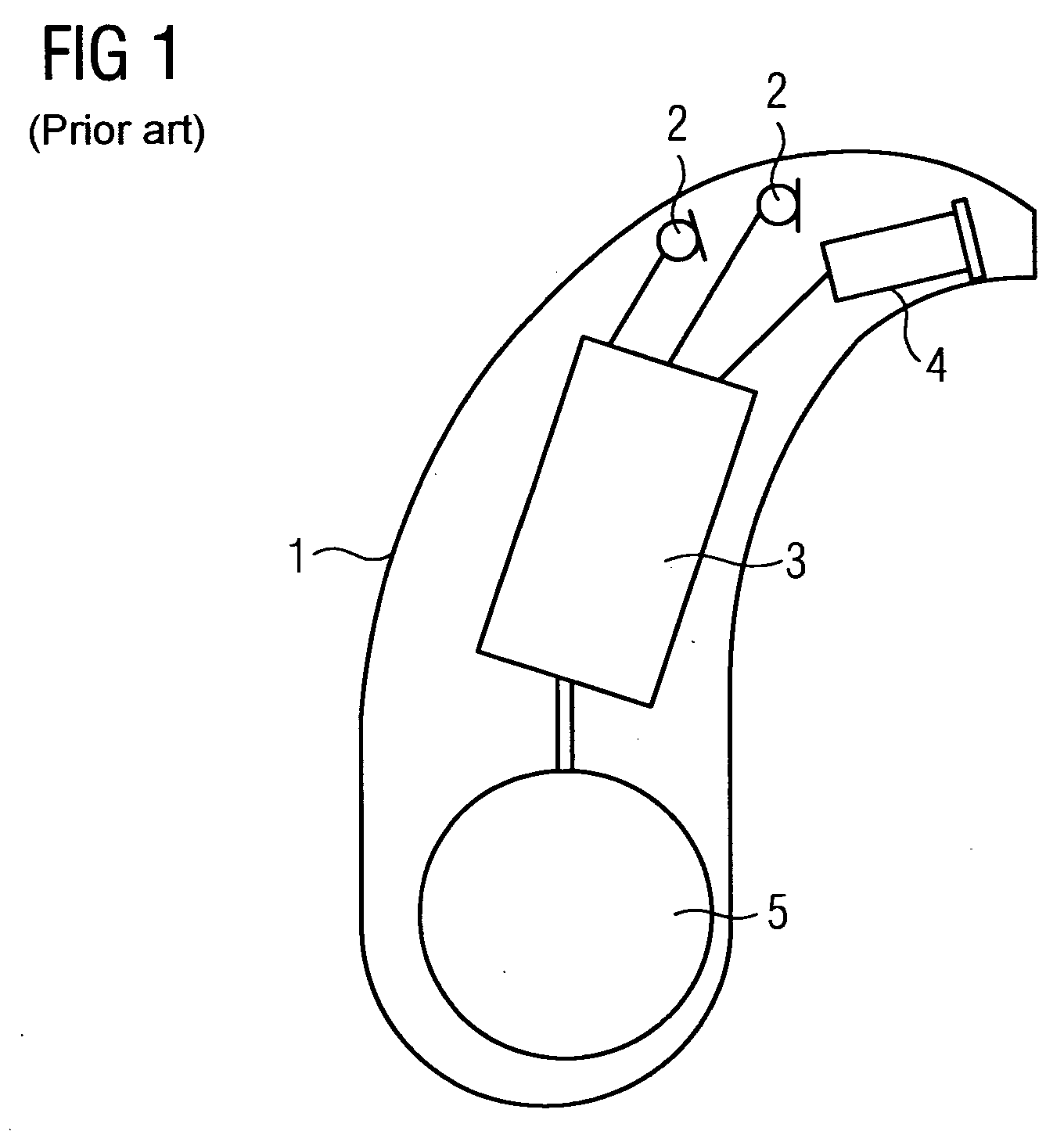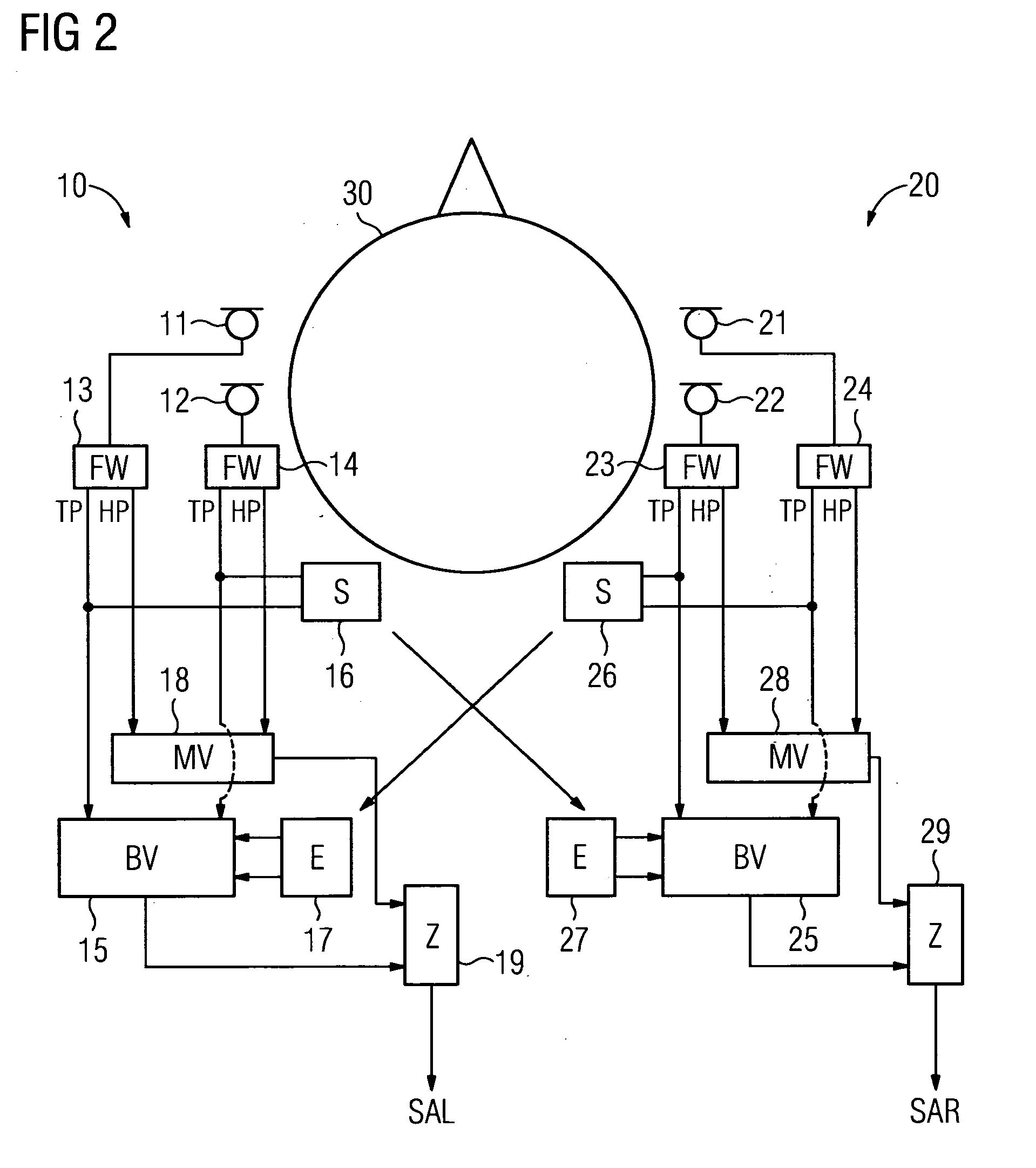Hearing system with partial band signal exchange and corresponding method
a partial band and signal exchange technology, applied in the field of hearing systems, can solve the problems of restricted, noise problems occurring, and inability to continue, and achieve the effect of improving binaural supply, saving computing costs and energy consumption
- Summary
- Abstract
- Description
- Claims
- Application Information
AI Technical Summary
Benefits of technology
Problems solved by technology
Method used
Image
Examples
Embodiment Construction
[0022]The exemplary embodiment shown in more detail below represents a preferred embodiment of the present invention.
[0023]FIG. 2 shows a schematic representation of hearing device system with a left hearing device 10 and a right hearing device 20 for the binaural supply of a hearing device wearer 30. The left hearing device has two microphones 11 and 12 in order to realize a directional microphone or to execute beam forming, blind source separation and suchlike. The output signals of the microphones 11 and 12 are each fed to a cross-over network 13, 14. Each of these two cross-over networks 13 and 14 has a low pass filter output TP and a high pass filter output HP. Instead of or in addition to the microphones 11 and 12, other signal input facilities, like for instance a telephone coil, a radio antenna and suchlike can also be used for instance.
[0024]The low frequency parts of the input signals from the cross-over networks 13 and 14 are fed to a binaural processing unit 15. At the s...
PUM
 Login to View More
Login to View More Abstract
Description
Claims
Application Information
 Login to View More
Login to View More - R&D
- Intellectual Property
- Life Sciences
- Materials
- Tech Scout
- Unparalleled Data Quality
- Higher Quality Content
- 60% Fewer Hallucinations
Browse by: Latest US Patents, China's latest patents, Technical Efficacy Thesaurus, Application Domain, Technology Topic, Popular Technical Reports.
© 2025 PatSnap. All rights reserved.Legal|Privacy policy|Modern Slavery Act Transparency Statement|Sitemap|About US| Contact US: help@patsnap.com



